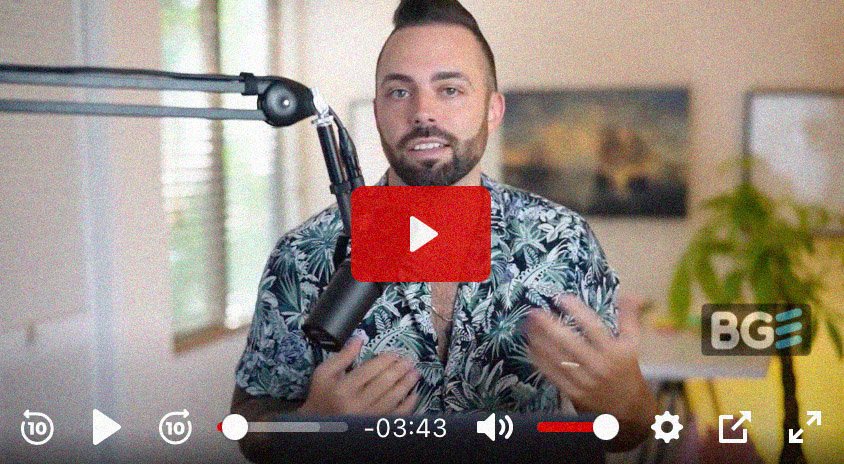How to start a blog and find your first readers (part 1)
Picking a topic and a name
Blogging remains one of the most effective ways to share your ideas and build an audience. If it attracts traffic, it can become a source of revenue (advertising, affiliate marketing and digital products), even if it wasn’t designed from the start as a commercial project.
I don’t recommend starting a blog solely to “make a living” in the current environment, but you can always monetise it once you have an audience.
Where to start?
Begin by deciding on the topic (your niche) and the name. These two choices lay the foundation for everything that follows.
To get off to a good start, bloggers should choose a topic they are passionate about and can write about without getting bored, as well as a name that won’t constrain them. There is no need to chase perfection at this stage; a blog will always evolve over time.

A choice that can grow with you
You’ve decided to launch a blog, great! But as we’ve just seen, before you rush to buy a domain name or start designing, you need to answer two essential questions:
- What will your blog be about?
- What will you call it?
Get these two decisions right, and you’ll save yourself a lot of headaches later. That said, you don’t need to stress over perfection. Just choose something you’ll be happy to stick with.
Try to think of a topic (niche) you’ll actually enjoy writing about and a blog name that feels right: one that leaves you room to grow as your blog evolves.
Step 1: choose a niche
This is where many beginners freeze. They overthink their choice, trying to find the “perfect” niche.
When in fact there is no perfect topic.
But there is a great topic for you.
The best niche is one you can keep writing about without getting bored. Consistency is what builds a blog, not chasing the trendiest topic of the month.

What makes a good blog topic?
Writing regularly on a topic isn’t enough. It also needs an audience: people should be Googling, searching, or pinning content around your theme, otherwise, even the best writing won’t get discovered. And finally, the topic should bring some kind of value: solving a problem, teaching something useful, or inspiring readers. Even “fun” niches work best when they offer a clear benefit.
To test whether your idea holds up, ask yourself a few simple questions. What do people often come to you for advice about? What challenges have you solved recently that might help others? What do you wish you had known one or two years ago? And perhaps most importantly: could you easily write ten posts on this subject without running out of ideas? If the answer is yes, you’re on the right track.
Topics that work
If your blog is primarily commercial, some niches are easier to monetise, because advertisers pay higher rates or readers are ready to buy. Here are a few examples:
- Personal Finance & Online Business: Budgeting, side hustles, freelancing tips, investing basics
- Food & Lifestyle: Easy recipes, meal prep, home organization, cozy living
- Health & Wellness: Fitness routines, mental health, self-care, postpartum recovery
- Travel & Parenting: City guides, toddler activities, family travel tips
- Tech & Software: App tutorials, blogging tips, AI tools
And don’t worry if your idea feels “too small.” Niches like urban gardening, bullet journaling, or even potato chip reviews have dedicated audiences. The internet is huge.

Step 2: choose a blog name
A strong blog name is short and simple, ideally no more than three words. It should be easy to spell and pronounce, so avoid things like numbers or hyphens that can confuse readers.
The best names also leave room to grow. For example, “KetoLife2025” locks you into one narrow diet, while something like “Healthy Bite” allows you to expand into other areas over time.
Finally, test how natural it feels to say out loud. If introducing yourself with “I run yourblogname.com” sounds awkward, it’s a sign you should keep brainstorming.
How to brainstorm names that work
- Write down 10–20 words related to your topic or vibe.
- Mix and match them. Add personality words: cozy, wild, mindful, bold, glow, vault, wander.
- Try different styles:
- YourName + Topic: JennaTravels, MariaMakesMoney
- Catchy Phrases: The Lazy Budgeter, No BS Wellness
- Benefit-Based: Simplify & Thrive, Escape the 9-to-5
- Descriptive Combos: Bullet Journal Babe, Fit Freelance Life
Still stuck? Ask an AI tool (like ChatGPT) to generate name ideas, or explore the Brand name generators section of my Toolbox.
When in doubt, choose your own name for your blog: it helps build a flexible personal brand and makes it easier to pivot if your niche evolves. This approach gives you the freedom to shift topics, rebrand, or expand without starting from scratch.
Step 3: secure your domain name
Quick domain tips
Your domain is your blog’s web address (like myamazingblog.com). Keep it as close to your blog name as possible.
- Go for .com if available
- Avoid dashes or numbers
- If your name is taken, tweak it slightly: add “the,” “my,” or “blog” (e.g., thequietshift.com, mybudgetjournal.com)
You’ll often get a free domain when you sign up for hosting, so don’t rush to buy it separately yet.

What’s next
Once you have a topic and a name, you’re ready for the exciting part: launching your blog and getting it online.
Next, in the second part:
- Launch your blog: From idea to website: hosting, domain, and WordPress setup.
A no-tech-stress guide to getting your blog online with WordPress and setting up the basics.
This next post will be followed by:
- Make it look and feel professional: themes and must-have pages.
Choose a beginner-friendly theme and add the essential pages that make your blog look trustworthy. - Create and share content that builds trust (and your first readers).
Write posts that people actually want to read, then promote them the smart way to get your first 100 visitors.
🎧
Prefer to listen? This topic is also explored in one of my podcast episodes:
FAQ – choosing a blog topic and name
Great to have you here! Feel free to leave your thoughts in the comments.
Hello, I’m John Dawson, a graphic designer (for a little while longer) and the writer behind DawsonDecoded, where I share hands-on insights on AI, blogging, social media, and whatever else crosses my mind.”
Get new posts by email when they’re worth sharing.
No spam.
More on blogging:
How to start a blog and find your first readers (part 3)
Reading Time: 9 minutesMake it look and feel professional: pick a lightweight theme, set a basic brand kit, and publish the must‑have pages.
How to fact-check your blog post
Reading Time: 5 minutesFact-checking protects both you and your readers. This simple process allows you to separate facts from opinions, verify claims, and add safeguards so your published content remains accurate, credible, and trustworthy.
Can you still make a living from a blog in 2025?
Reading Time: 5 minutesBetween viral promises and reality, can a blog still generate a viable income in 2025? Here’s what the numbers say.
Blogging with AI
Reading Time: 4 minutesAI can speed up ideas, drafts, and edits, but it should assist rather than replace you. Keep your voice, verify facts, and add your perspective so posts stay authentic and useful.
How to start a blog and find your first readers (part 2)
Reading Time: 8 minutesIn Part 2 of this beginner’s guide, we move from idea to reality by getting your blog online. You’ll learn what domains and hosting actually are, and how to install WordPress in just a few clicks.
What are the best social media platforms to drive traffic to your blog?
Reading Time: 10 minutesWhich social platform is best for growing a blog? Here’s a breakdown of the main networks: their audiences, strengths, and weaknesses.
More on blogging:
You might like:
Words that are mine
Reading Time: 2 minutesAfter months of writing mostly for algorithms and sales funnels, I stopped obsessing over online income and started writing in my own voice.
Eight months chasing a mirage
Reading Time: 3 minutesEight months in, I’m changing course. I’m going back to casual blogging and stepping away from the commercial / affiliate angle. The pressure’s off, and I finally have my life back.
From BGE to “Launch to $10K”, Enfroy’s strategic shift signals the end of SEO-first blogging
Reading Time: 4 minutesAs of November 2025, BGE runs as a free masterclass and Enfroy funnels to Launch to $10K. With AI Overviews reducing clicks, commercial blogging is rarely a standalone model anymore.
The dark side of online income: how scammers are using AI and social media to make millions
Reading Time: 7 minutesScammers use AI and social media ads to create fake funnels that mimic legitimate ones. This post explains how they work and what ethical marketers can learn.
Betting on yourself: why creating content will always be more profitable than playing the lottery
Reading Time: 8 minutesWhy blog instead of buying lottery tickets? Because the odds and the long-term payoff make content creation a far smarter bet for financial success.
Are influencer courses still worth it in 2025, or just built on yesterday’s internet?
Reading Time: 3 minutesOnline courses promise to teach you how to make money as a creator. But in 2025, are they worth it or just selling outdated methods?
Can you really make passive income with stock photography in 2025?
Reading Time: 23 minutesCan you really earn passive income selling stock photos? I tested it myself. Here’s what the reality looks like and what it takes to make it work.















Leave a Reply